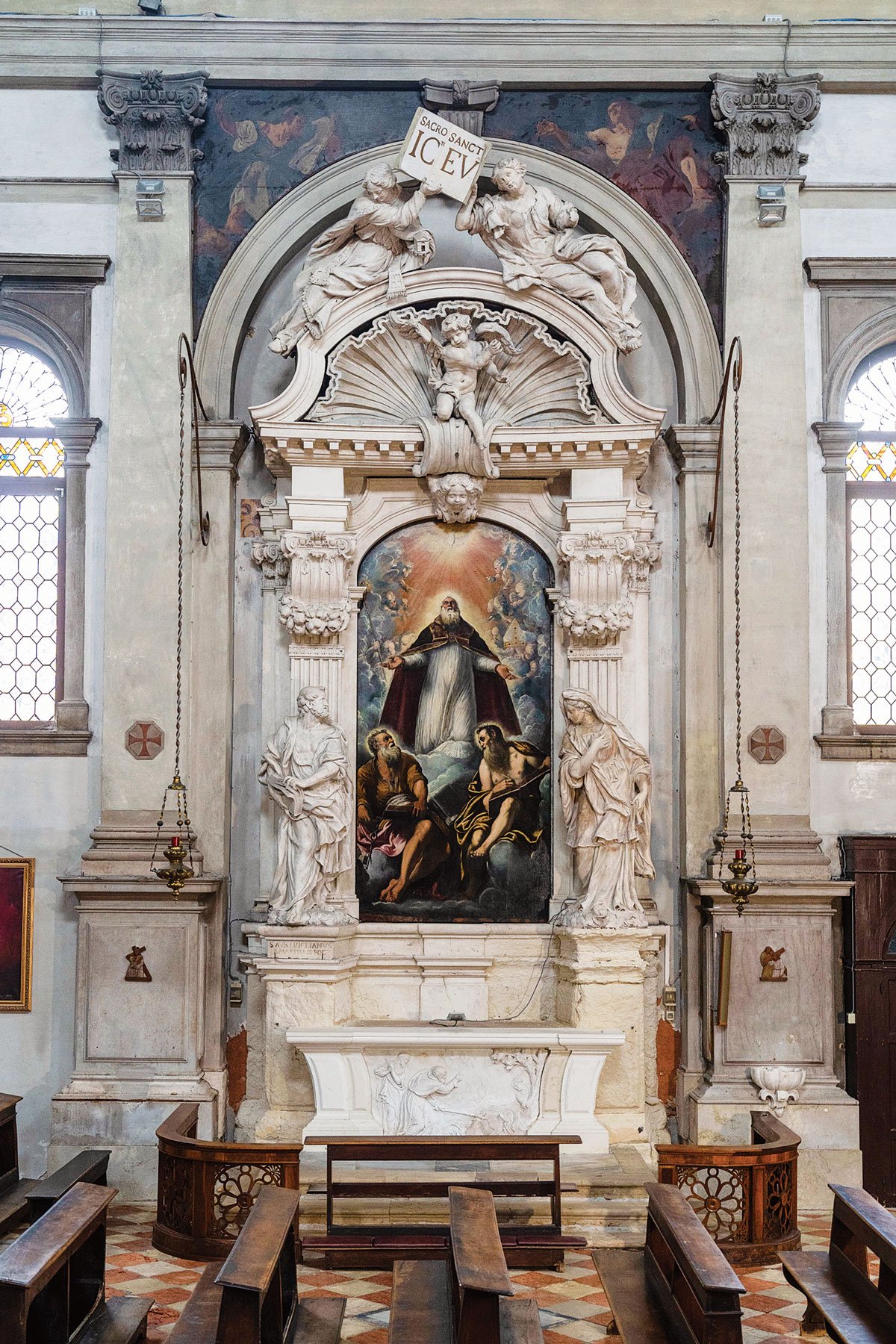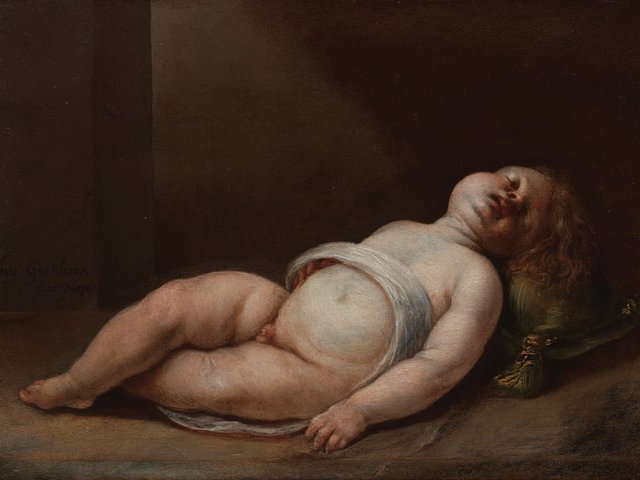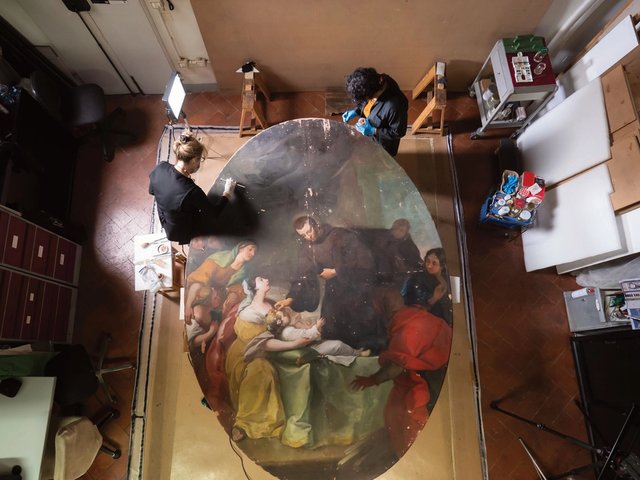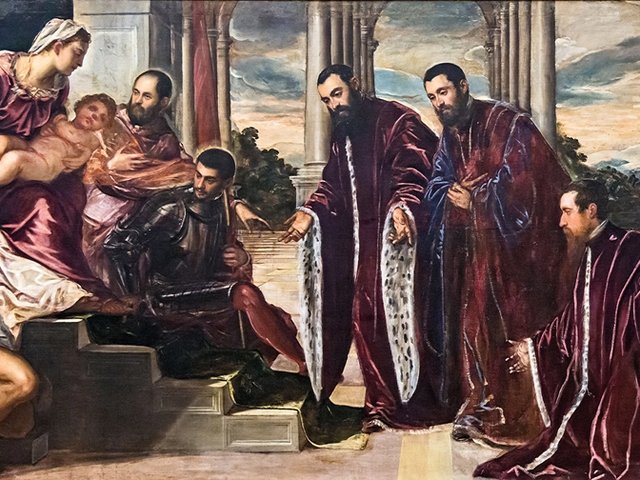On the 500th anniversary of the birth of the beloved Venetian artist, Jacopo Tintoretto, in 2018, a lesser-known painter born a century after his death claimed a sprinkling of his diffused golden limelight. Among 19 Tintoretto paintings that the US non-profit Save Venice restored for the occasion was Saint Martial in Glory with Saints Peter and Paul, an altarpiece at San Marziale, the artist’s parish church that is rarely open to the public today. When the freshly luminous painting was reinstalled at the altar, the spandrels above it depicting the Evangelists Luke and John instantly looked murky in comparison. Save Venice decided to conserve them and two more spandrels of Matthew and Mark, and they all happened to be by a single artist: Giulia Lama.
“The minute [the spandrels] started to come out from all of this grime, people went, ‘Right, we know this artist. There’s work by her in the Accademia, major altarpieces… Wait a minute, why are we not paying more attention to Giulia Lama?’” recalls Tracy Cooper, a Save Venice board member and art history professor at Temple University in Philadelphia, who is leading research for the organisation’s Women Artists of Venice (WAV) programme.
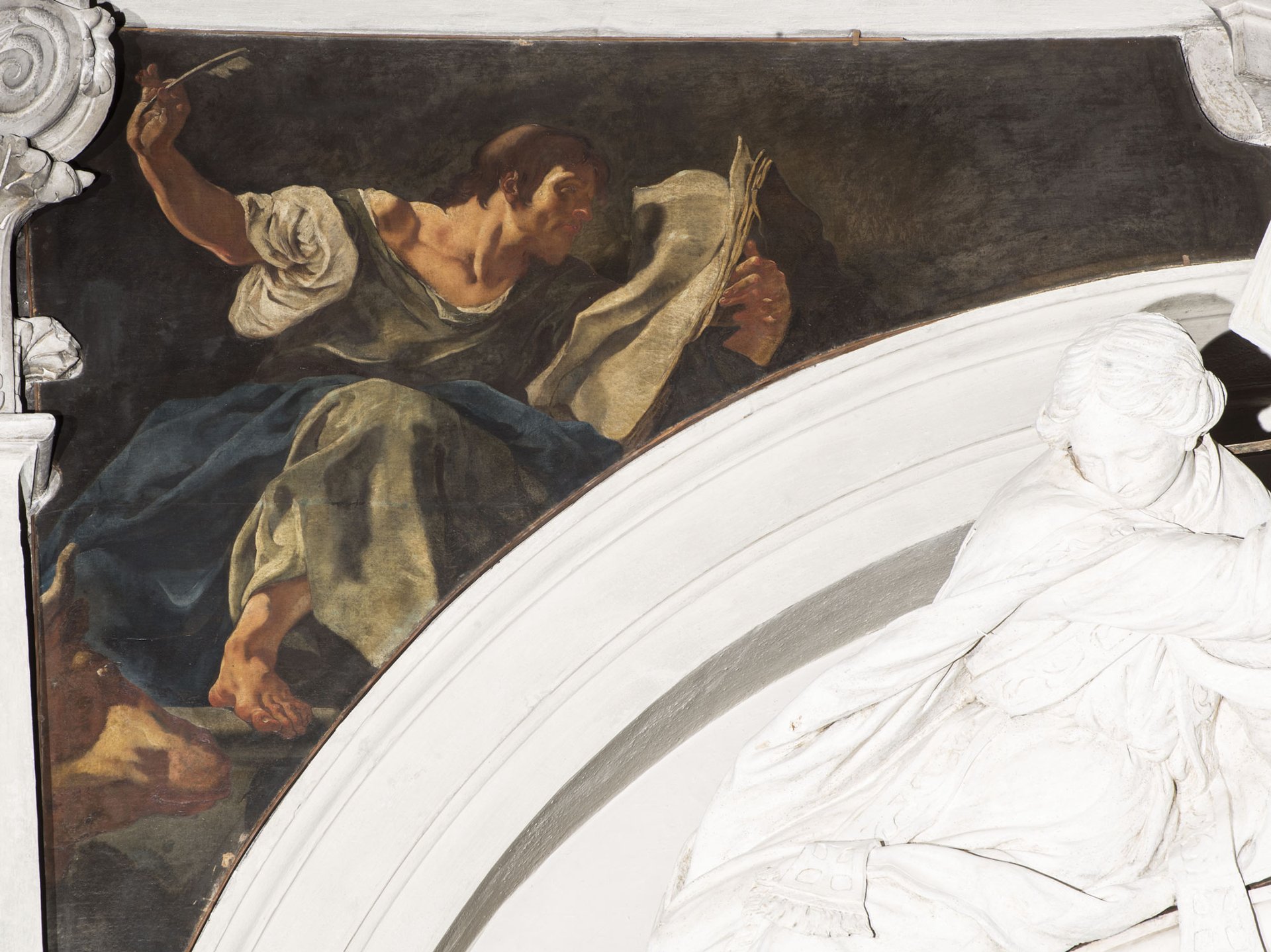
Giulia Lama's spandrel painting of Saint Luke (1720s) in the church of San Marziale, Venice Photo: Matteo De Fina; courtesy of Save Venice
The rediscovery of these works by Lama, a locally—if not yet internationally—known 18th-century artist whose expressive religious paintings are in churches across the Venetian lagoon, spurred the WAV initiative. The programme launched last June and will combine research and conservation to raise the profile of female artists active in Venice and the wider Veneto region from the 16th century until the late 18th century. Initial conservation projects will prioritise works by Lama, the pastellist Rosalba Carriera and her student, Marianna Carlevarijs.
Melissa Conn, the director of the organisation’s Venice office, says that the region’s historic female artists have received curatorial and scholarly attention in recent years “but not in any sort of organised way”. In 2018 the Ca’ Rezzonico museum of 18th-century Venice displayed Lama drawings from its permanent collection, some for the first time, and Cooper notes that a flurry of exhibitions and publications in Venice and Padua were devoted to women artists in the mid-1990s.
WAV will involve various collaborations with Venetian scholars and institutions. “The funding is ours, but certainly the brainpower and thoughts and ideas are through our collaboration with many people in Venice,” Conn says.
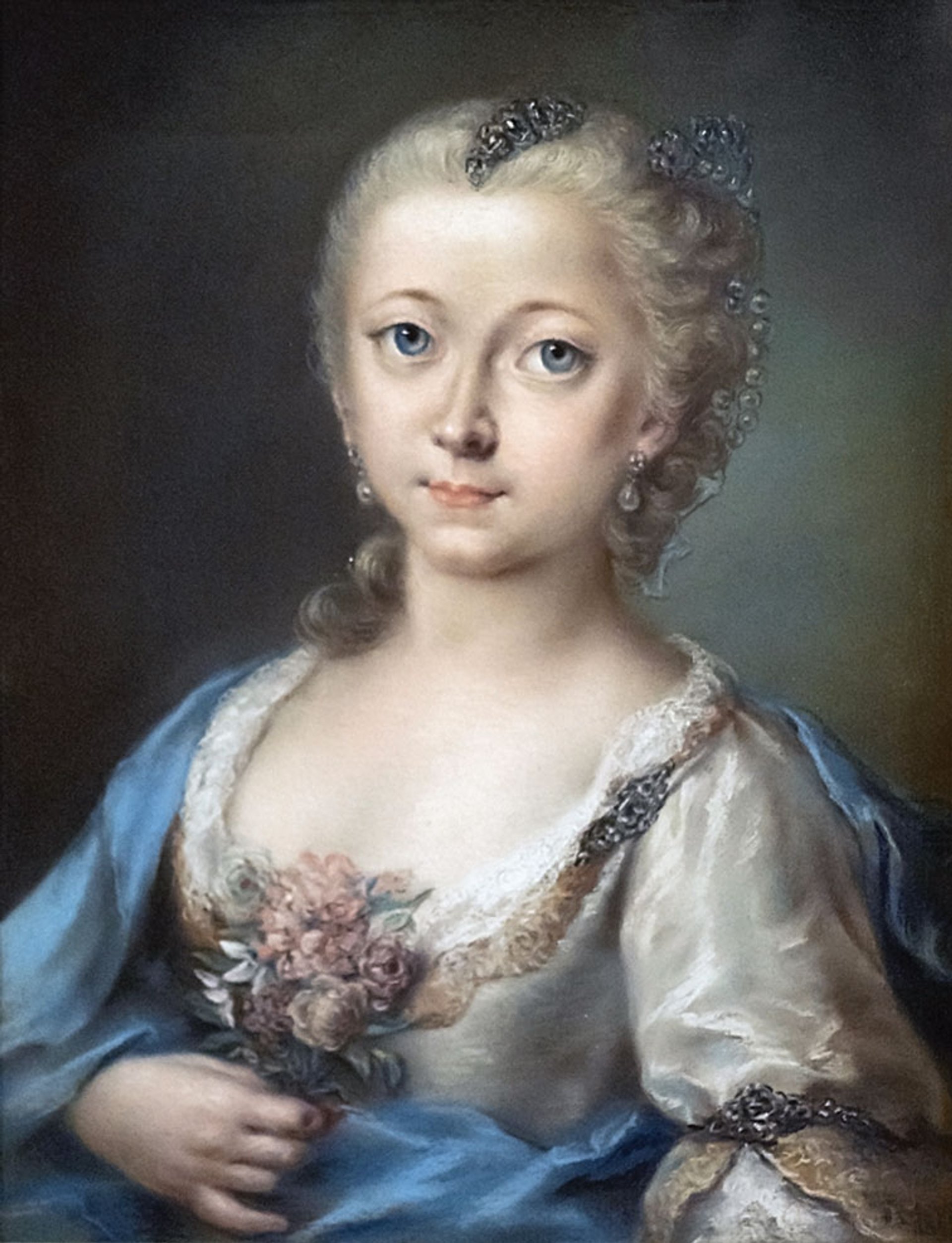
Marianna Carlevarijs’s pastel portrait of Caterina Balbi (1740-42) will be conserved at Ca’ Rezzonico museum Ca’ Rezzonico
Research will commence with the more than 30 artists Cooper has identified to date, including Irene di Spilimbergo (who studied briefly under Titian), the 17th-century portraitist Chiara Varotari, Bernardina di Zuan Mathio, Caterina Tarabotti and Marietta Robusti (the daughter and assistant of Tintoretto). The recipient of WAV’s first fellowship this year, the art historian Susan Nalezyty, will work with Cooper to create a public database of female Venetian artists. This is intended to encourage research that could answer many questions, such as whether Venice was receptive to women artists and what training opportunities were available to them. WAV is also presenting sessions at the Renaissance Society of America annual conference in Dublin, Ireland, next month for the same reason.
Save Venice committed €230,000 to WAV in 2021 and will increase funding as new projects and research emerge. The organisation also plans to support conservation with a sponsorship model, and is currently fundraising €60,000 to restore Lama’s Female Saint in Glory in the Church of Santa Maria Assunta at Malamocco on the Lido, which is scheduled to start in spring pending authorisation from the government office for archaeology, fine arts and landscape in Venice. Another future project will focus on a series of Carriera pastels at the Accademia, a medium that is notoriously difficult to conserve.
Although Save Venice turned 50 last year, it has not conserved works by women before now. Historically, there were fewer female artists than male ones, and women often worked with fathers or brothers who scored the commissions—leaving attributions in their names.
Still, the organisation “may have inadvertently restored a Marietta” back in 2018, Conn adds hopefully, referring to the difficulty of identifying the hand of Tintoretto’s famously talented daughter in his masterpieces. Perhaps the WAV researchers will discover that it has been conserving works created with a woman’s touch all along.


